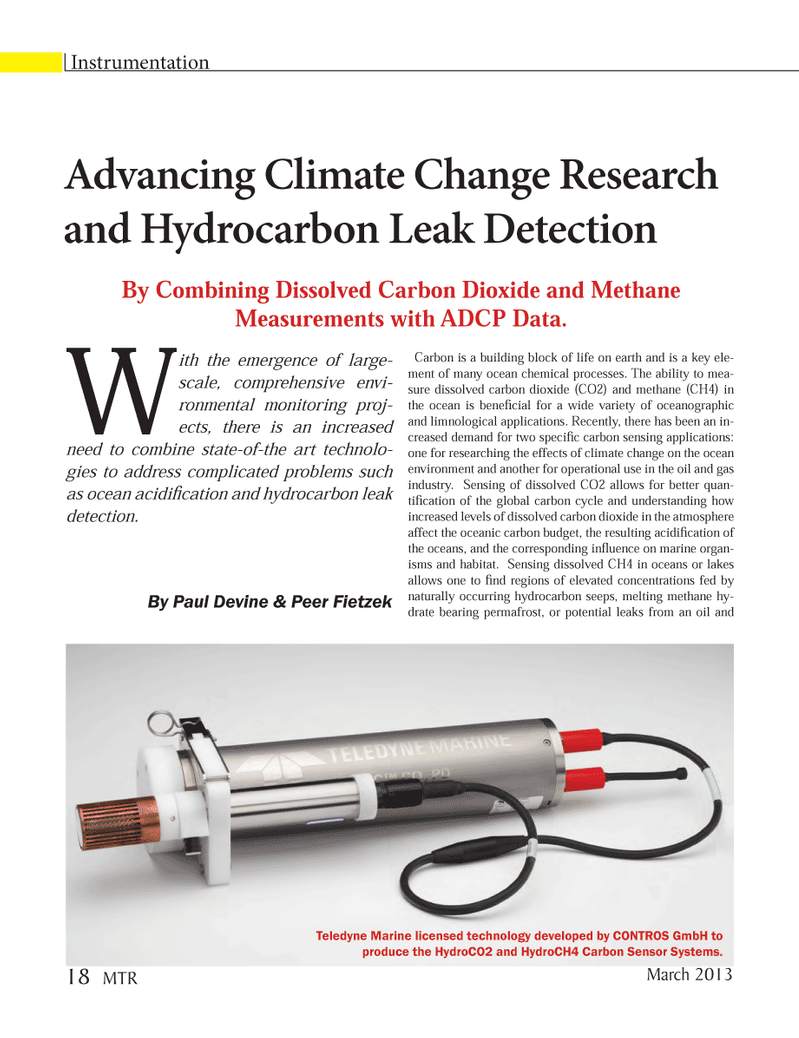
Page 18: of Marine Technology Magazine (March 2013)
Instrumentation: Measurement, Processing & Analysis
Read this page in Pdf, Flash or Html5 edition of March 2013 Marine Technology Magazine
Instrumentation With the emergence of large- scale, comprehensive envi- ronmental monitoring proj- ects, there is an increased need to combine state-of-the art technolo- gies to address complicated problems such as ocean acidiÞ cation and hydrocarbon leak detection. By Paul Devine & Peer Fietzek Carbon is a building block of life on earth and is a key ele- ment of many ocean chemical processes. The ability to mea- sure dissolved carbon dioxide (CO2) and methane (CH4) in the ocean is beneÞ cial for a wide variety of oceanographic and limnological applications. Recently, there has been an in- creased demand for two speciÞ c carbon sensing applications: one for researching the effects of climate change on the ocean environment and another for operational use in the oil and gas industry. Sensing of dissolved CO2 allows for better quan- tiÞ cation of the global carbon cycle and understanding how increased levels of dissolved carbon dioxide in the atmosphere affect the oceanic carbon budget, the resulting acidiÞ cation of the oceans, and the corresponding inß uence on marine organ- isms and habitat. Sensing dissolved CH4 in oceans or lakes allows one to Þ nd regions of elevated concentrations fed by naturally occurring hydrocarbon seeps, melting methane hy-drate bearing permafrost, or potential leaks from an oil and Advancing Climate Change Research and Hydrocarbon Leak Detection By Combining Dissolved Carbon Dioxide and Methane Measurements with ADCP Data. Teledyne Marine licensed technology developed by CONTROS GmbH to produce the HydroCO2 and HydroCH4 Carbon Sensor Systems. 18 MTRMarch 2013 MTR #2 (18-33).indd 18MTR #2 (18-33).indd 183/5/2013 4:01:02 PM3/5/2013 4:01:02 PM

 17
17

 19
19
